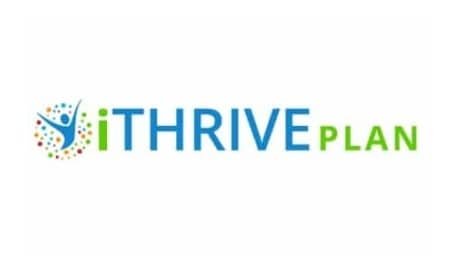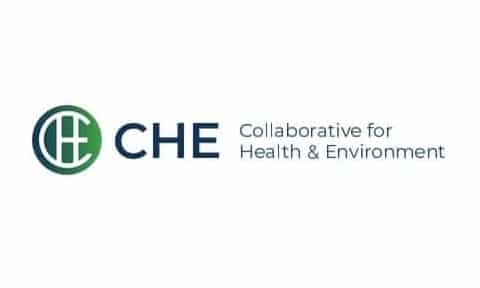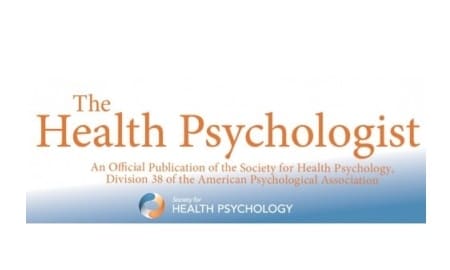Are you a health professional?
This section does not replicate the other information on this topic but provides additional details or context most relevant to professionals.
Modes of action: the biochemical stress response
A certain amount of stress is normal. But chronic stress results in glucocorticoid receptor resistance (GCR) that, in turn, results in failure to down-regulate inflammatory response.1Cohen S, Janicki-Deverts D et al. Chronic stress, glucocorticoid receptor resistance, inflammation, and disease risk. Proceedings of the National Academy of Science U S A. 2012 Apr 17;109(16):5995-9. Sustained stress leads to inflammation, which can influence cancer growth.
The body’s stress response
The physical stress response is driven by a complex cascade of nerve activation and hormones:2Harvard Medical School. Understanding the stress response. Harvard University. July 6, 2020. Viewed November 12, 2021.
- The hypothalamus activates the sympathetic nervous system into a “fight or flight” response.
- The adrenal glands release epinephrine/adrenaline into the bloodstream, causing these and other physiological changes:
- Tachycardia and tachypnea
- Elevated blood pressure
- Hyperglycemia and hyperlipidemia
- Release of cortisol
- When the stressor or threat lasts only a short time, the parasympathetic nervous system calms the body and returns it to a pre-threat state.
- An extended stress state can manifest as chest pain, heart palpitations, headaches, dysphagia, intestinal cramping, anxiety, panic, immobility, frustration, muscle tension and inflammation.
Stress and cancer
When stressors and threats are frequent or constant, cortisol remains at chronically high levels. When the stress response continues for a prolonged period, the constant hormone imbalance can be damaging. Over time, stress has the potential to push the body into pre-disease states.3Glei DA, Goldman N, Chuang Y-L et al. Do chronic stressors lead to physiological dysregulation? Testing the theory of allostatic load. Psychosomatic Medicine. 2007:69(8);769–776; Juster RP McEwen BS, Lupien SJ. Allostatic load biomarkers of chronic stress and impact on health and cognition. Neuroscience & Biobehavioral Reviews. 2010:35(1);2–16; McEwen BS, Stellar E. Stress and the individual. Mechanisms leading to disease. Archives of Internal Medicine. 1993:153(18);2093–2101; McEwen BS, Wingfield JC. What is in a name? Integrating homeostasis, allostasis and stress. Hormones and Behavior. 2010:57(2);105–111. Stress hormones have been found to fuel cancer growth and spread in animals.4Lemanne D, Maizes V. Advising women undergoing treatment for breast cancer: a narrative review. Journal of Alternative and Complementary Medicine. 2018 Sep/Oct;24(9-10):902-909; Merville S. Betting on Beta Blockers. The University of Texas MD Anderson Cancer Center. Summer 2014. Viewed November 13, 2021.
Organs and tissues begin to function differently in response to the continual outpouring of stress hormones and chemicals. A prolonged stress response may compromise health and result in symptoms such as anxiety, depression and insomnia. The immune system is also affected—immune cells become diverted with the stress response instead of finding and eradicating cancer cells.5Alschuler LN, Gazella KA. The Definitive Guide to Cancer, 3rd Edition: An Integrative Approach to Prevention, Treatment, and Healing. Berkeley, California: Celestial Arts. 2010.
Eventually, if the chronic stress response is unmitigated, a state of cortisol depletion and adrenal exhaustion ensues. This state may require a different medical approach than high cortisol levels do.6Block KI. Life over Cancer: The Block Center Program for Integrative Cancer Treatment. New York: Bantam Dell. 2009.
In sum, stress deteriorates health and resilience leading to poor health outcomes to include mental illness, chronic disease and premature death.7Paradies Y. A review of psychosocial stress and chronic disease for 4th world indigenous peoples and African Americans. Ethnicity & Disease. 2006;16(1);295–308. Stress can both promote cancer growth and divert the body’s natural defenses against it.
Integrative physician Keith Block, MD, distinguishes among three patterns of stress adaptation:8Block KI. Life over Cancer: The Block Center Program for Integrative Cancer Treatment. New York: Bantam Dell. 2009.
- Hyperadapted or high-stress pattern with prolonged elevated cortisol
- Inverted stress pattern, in which the timing of cortisol and melatonin release are reversed (see more about the relationship between melatonin and cortisol in the Expert commentary on Sleep Disruption ›)
- Non-adapted pattern, in which cortisol levels are either consistently high or depleted, melatonin levels are low, and both hormones have no circadian rhythm
Block’s approach with natural supplements varies with the pattern.
Screening for distress and supportive care needs
CancerChoices and many others in the field recommend that cancer care programs have a process of screening for distress in their patients. That process would include not only assessment, but triage and treatment. Careful psychosocial assessment of all patients with cancer (and their caregivers) would include precancer diagnosis trauma and psychiatric history, plus concurrent conditions such as adjustment disorder. Also, assess for other risk factors for distress, such as comorbid conditions, that are likely to lead to mood disorders and/or trigger PTSD.

Risk factors are discussed in this article.
Either overlooking or incorrectly labeling a patient as having a psychiatric condition such as PTSD can be detrimental to their wellness and response to therapy.
Though systematic screening for distress and supportive care needs is recommended in clinical practice guidelines to ensure that cancer care addresses all aspects of well-being, screening alone is not enough. The care team should then routinely assess their patients for distress, provide psychosocial support and refer those who have more serious distress for psychological therapy.
Evidence on the benefits of distress screening is mixed but largely favorable.
- One review, which looked only at screening and didn’t consider follow-up, didn’t find much benefit to screening psychosocial well-being and care needs in people with cancer.9Schouten B, Avau B et al. Systematic screening and assessment of psychosocial well-being and care needs of people with cancer. Cochrane Database of Systematic Reviews. 2019 Mar 26;3(3):CD012387.
- However, a meta-analysis and two reviews found that screening was beneficial, particularly if combined with triage, mandatory intervention, and referral for evidence-based treatment when indicated.10Mitchell AJ. Screening for cancer-related distress: when is implementation successful and when is it unsuccessful? Acta Oncologica. 2013 Feb;52(2):216-24; Carlson LE. Screening alone is not enough: the importance of appropriate triage, referral, and evidence-based treatment of distress and common problems. Journal of Clinical Oncology. 2013 Oct 10;31(29):3616-7; Dekker J, Graves KD, Badger TA, Diefenbach MA. Management of distress in patients with cancer—are we doing the right thing? Annals of Behavioral Medicine. 2020 Dec 1;54(12):978-984.
- A higher proportion of appropriate referrals for behavioral health services among people with breast cancer when community oncology programs used an implementation-strategy guided depression screening program compared with an educational-only strategy in a very large RCT; furthermore, patients in the intervention group required significantly fewer visits to the oncology clinic11Hahn EE, Munoz-Plaza CE et al. Effect of a community-based medical oncology depression screening program on behavioral health referrals among patients with breast cancer: a randomized clinical trial. JAMA. 2022;327(1):41–49.
- A large RCT found that the mental health and dynamic referral for oncology (MHADRO) program may increase access to mental health care, lessen hospitalizations, and improve providers’ management of psychosocial needs, but does not appear to impact overall functioning over time12O’Hea E, Kroll-Desrosiers A et al. Impact of the mental health and dynamic referral for oncology (MHADRO) program on oncology patient outcomes, health care utilization, and health provider behaviors: a multi-site randomized control trial. Patient Education and Counseling. 2020 Mar;103(3):607-616.
- A mid-sized controlled trial found that healthcare providers who implemented screening for distress reported significantly greater confidence in managing patients’ distress and greater awareness about person-centered care than those who did not, but only among those treating more than one tumor type.13Tamagawa R, Groff S et al. Effects of a provincial-wide implementation of screening for distress on healthcare professionals’ confidence and understanding of person-centered care in oncology. Journal of the National Comprehensive Cancer Network. 2016 Oct;14(10):1259-1266.
A full discussion of what makes a distress screening program successful is beyond the scope of this handbook. Whether or not your setting has a distress screening program in place, you can help your patients with distress in these ways:
- Making sure you and others on the team who will be doing assessments are well trained in screening for distress, triage, providing real-time emotional support and referring to mental health professionals when indicated.
- Make sure your patients understand that their mental well-being is important; how to recognize mental and emotional symptoms; and how, when and to whom they should report their distress.
- Directly inquire about your patients’ mental and emotional state at each visit.
- Have a means to refer people living with cancer and their caregivers to mental health care professionals as well as psychological and social support programs for evidence-based treatment.
Stress inventory: creating a stress score
The Holmes-Rahe Stress Inventory assigns a score to the top stressors in people’s lives to assess their risk of developing a stress-induced breakdown.14American Institute of Stress. The Holmes-Rahe Stress Inventory. Viewed April 23, 2018. You may want to investigate whether this tool would help you and your patients identify stress levels as a first step toward managing stress responses.
Anger
Anger is a common response to cancer, both among people with cancer and their intimate partners. Anger can sometimes lead to abuse and even violence.15Mejri N, Lajnef I et al. Intimate partner violence after cancer diagnosis: an SOS call. Supportive Care in Cancer. 2023 Jan 9;31(2):103. Screening for anger in both people with cancer and their caregivers, and then referring for counseling or therapy, may prevent abuse.
PTSD and cancer
The relationship between PTSD symptoms and cancer is complex. Trauma can increase the risk of cancer, but cancer can also create trauma and induce symptoms. People with cancer are more likely to have PTSD symptoms than people without cancer.16Swartzman S, Booth JN, Munro A, Sani F. Posttraumatic stress disorder after cancer diagnosis in adults: a meta-analysis. Depression and Anxiety. 2017 Apr;34(4):327-339; Rapaport L. Cancer survivors often living with PTSD. Reuters. November 20, 2017. Viewed November 12, 2021.
For some people with cancer and/or their caregivers, the cancer experience can be traumatic and/or bring up past unresolved traumas. Long-term problems may develop or resurface, such as adjustment difficulties, anxiety or depression. In addition to normal stress reactions, traumatic stress-like reactions may be seen in some people with cancer or their caregivers:
- Intrusive upsetting thoughts
- Reacting to reminders such as follow-up scans
- Avoidance
The Diagnostic and Statistical Manual of Mental Disorders, 4th edition (DSM-IV), expanded PTSD criteria to include diagnosis and treatment of a life-threatening illness as a stressor that could elicit PTSD. These criteria were further revised in the DSM-5.17Cordova MJ, Riba MB, Spiegel D. Post-traumatic stress disorder and cancer. Lancet Psychiatry. 2017 Apr;4(4):330-338. Some situations and factors may increase the risk for a traumatic reaction to cancer, such as prior trauma history, pre-existing psychiatric conditions or poor social support.
Psychiatrist David Servan-Schreiber, author of Anticancer: A New Way of Life, describes the impact of past traumas being reactivated by cancer:18Servan-Schreiber D. Anticancer: A New Way of Life. New York: Penguin Group. 2008. p. 148.
They may take over the individual’s entire mental and physical functioning . . . Inwardly, the emotional wound also affects deep vital processes. Just as a lesion on the skin activates repair mechanisms, a psychological wound sets off mechanisms of the stress response: release of cortisol, adrenaline, and inflammatory factors, as well as a slowdown in the immune system . . . these physiological stress mechanisms can contribute to the growth and spread of cancer . . . unhealed traumas lead the person back to a false sense of helplessness . . . it is not a true reflection of the present. Allowing a person to realize this illusion is the key to therapy.”
Managing PTSD in people with cancer
“PTSD should be approached with caution and be informed by existing evidence-based approaches for traumatic stress.”19Cordova MJ, Riba MB, Spiegel D. Post-traumatic stress disorder and cancer. Lancet Psychiatry. 2017 Apr;4(4):330-338. Certain proven psychotherapy techniques for PTSD also seem to be useful in cancer-related PTSD. Systematic reviews have found that the following techniques are helpful for one or some of the symptoms of PTSD:20Cordova MJ, Riba MB, Spiegel D. Post-traumatic stress disorder and cancer. Lancet Psychiatry. 2017 Apr;4(4):330-338; Smith MY, Redd WH, Peyser C, Vogl D. Post-traumatic stress disorder in cancer: a review. Psycho-Oncology. 1999 Nov-Dec;8(6):521-37.
- Cognitive behavioral therapy
- Eye movement desensitisation and reprocessing (EMDR)
- Supportive Expressive Therapy (SET), which promotes peer social support and expression of emotions and existential concerns and focuses on facing and grieving losses
- Cognitive behavioral stress management
- Couples based coping intervention
- Mindfulness-based approaches
- Promising approaches requiring further study:
- Narrative therapy
- Dyadic disclosure-promoting interventions
The authors of one review advise caution in using PTSD medications for people with cancer-related PTSD, as very little research has been done in this area. The authors discuss medications that might be used for cancer-related anxiety and sleep disruption, as well as the indications for using psychoactive medications and psychotherapy.21Cordova MJ, Riba MB, Spiegel D. Post-traumatic stress disorder and cancer. Lancet Psychiatry. 2017 Apr;4(4):330-338.
The book by the late Dr. David Servan-Schreiber describes how he helped cancer patients heal the helplessness associated with trauma. He asked them to list the ten most painful events of their lives. These events, he viewed as “screws fastening down a large metal plate crushing their desire to live.” He helped people to “unscrew” these events one by one and found that patients were often awakened to a very different way of living. “Once relieved of the weight they had been carrying around, they were able to look at everything differently. Although relieving patients of the pain of trauma is not a treatment for cancer, it often enables natural defenses to recover their strength, which can aid in the fight against the disease.”22Servan-Schreiber D. Anticancer: A New Way of Life. New York: Penguin Group. 2008. p. 150.
Expert commentary: supplements for managing stress
Janet Spitzer, MD, April 16, 2018: I generally aim more at supporting/nourishing the adrenals when someone has chronic stress (ashwaganda, holy basil, Siberian ginseng, etc.) and decreasing oxidative stress with antioxidants (vitamin C, vitamin E) and decreasing inflammation (fish oil, turmeric/curcumin) and nutrients that help soothe the nervous system and support biochemical pathways (like magnesium, CoQ-10, ribose, etc.).
Helpful links for professionals

Integrative nurse and health researcher Laura Pole provides practical and effective stress management advice: Managing Stress During Difficult Times ›
Cancer survivor expert Dr. Shani Fox talks about posttraumatic growthpositive psychological change experienced as a result of adversity and other challenges after cancer and describes why it’s important to understand that cancer can be a traumatic event: Post Traumatic Growth after Cancer ›
Shin KJ, Lee YJ et al. Molecular mechanisms underlying psychological stress and cancer. Current Pharmaceutical Design. 2016;22(16):2389-402.
Health professional comment
We invite health professionals to contribute expertise or send us questions.
"*" indicates required fields
Keep reading
Managing Stress
More Healing Practices
Learn more
References




